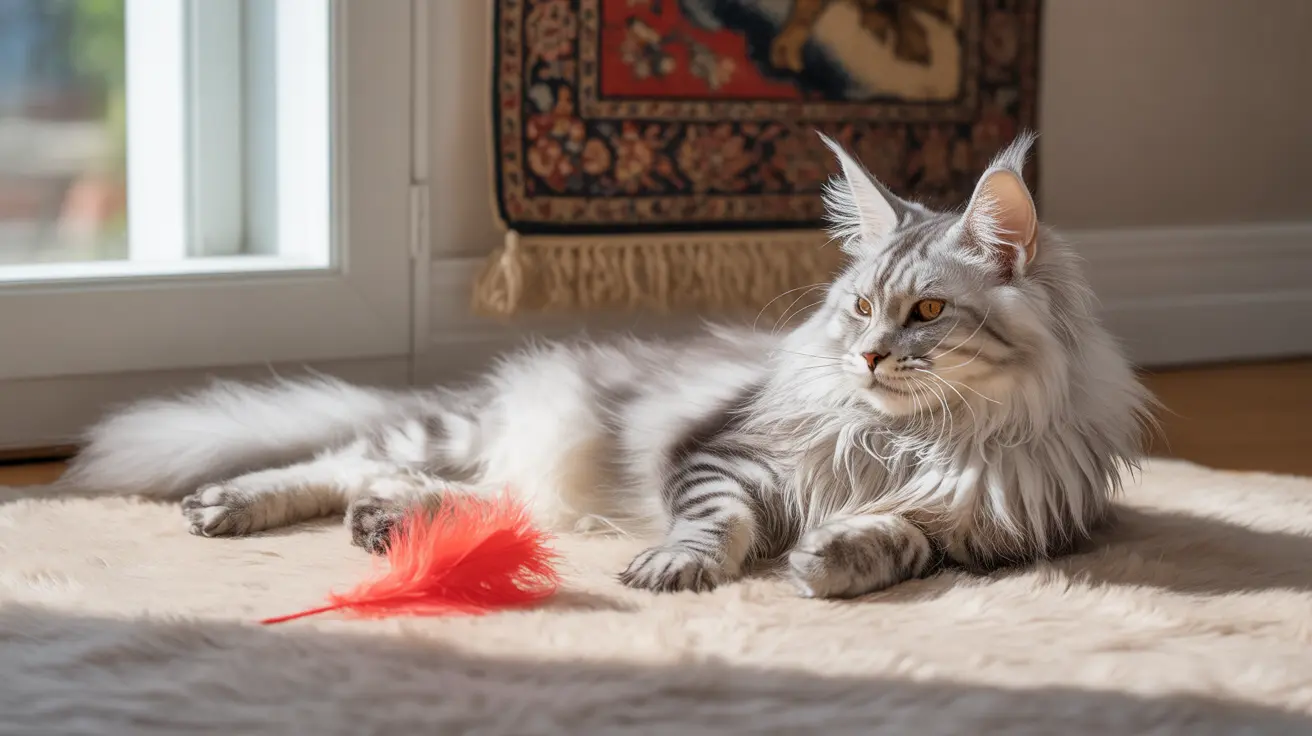If you've ever looked closely at your cat's ears, you've probably noticed the delicate, wispy hairs growing inside them. These distinctive features, known as cat ear furnishings, are more than just decorative—they play crucial roles in your feline friend's health and sensory capabilities.
Let's explore everything you need to know about these fascinating features, from their biological functions to their importance in different cat breeds.
What Are Cat Ear Furnishings?
Cat ear furnishings are the fine, specialized hairs that grow on the inner surface of a cat's external ear canal. While all domestic cats have some degree of ear furnishings, their length and density can vary significantly between individuals and breeds. These hairs are particularly prominent in certain breeds like Maine Coons, Norwegian Forest Cats, and Siberians.
The Vital Functions of Ear Furnishings
Protection Against Foreign Objects
One of the primary functions of ear furnishings is to create a natural barrier against environmental threats. These fine hairs act as a filtering system, preventing dust, debris, and even tiny parasites from entering the sensitive ear canal. This protective mechanism significantly reduces the risk of ear infections and irritation.
Enhancement of Hearing Abilities
While more research is needed, many experts believe that ear furnishings may play a role in enhancing a cat's already impressive hearing capabilities. These hairs might help channel sound waves more effectively into the ear canal, contributing to cats' remarkable ability to detect even the slightest sounds.
Temperature Regulation
Particularly in breeds adapted to cold climates, ear furnishings may help regulate the temperature within the ear canal. This function is especially important for outdoor cats or those living in colder environments, as the hairs can help maintain optimal conditions for the delicate inner ear structures.
Ear Furnishings vs. Ear Tufts
It's important to distinguish between ear furnishings and ear tufts (also known as lynx tips). While furnishings grow inside the ear, tufts are the longer hairs that protrude from the ear tips in certain breeds. These features serve different purposes and are controlled by separate genetic factors.
Breed-Specific Characteristics
The presence and appearance of ear furnishings can vary significantly among cat breeds:
- Maine Coons and Norwegian Forest Cats typically have dense, well-developed furnishings
- Siberian cats often display prominent ear furnishings as part of their cold-weather adaptations
- Short-haired breeds usually have more modest furnishings
- Hairless breeds like the Sphynx may have minimal to no ear furnishings
Caring for Your Cat's Ear Furnishings
While ear furnishings are generally self-maintaining, they may occasionally require attention:
- Monitor for excessive wax buildup
- Watch for signs of matting in long-haired cats
- Never attempt to pluck or trim ear furnishings unless directed by a veterinarian
- Regular vet check-ups can ensure ear health and proper furnishing maintenance
Frequently Asked Questions
What are cat ear furnishings and why do cats have them inside their ears?
Cat ear furnishings are fine hairs growing inside the ear canal that serve as a natural filtering system, protecting the ear from debris and helping maintain ear health.
How do ear tufts or lynx tips differ from ear furnishings, and which cat breeds commonly have them?
Ear tufts grow on the tips of ears, while furnishings grow inside. Maine Coons, Norwegian Forest Cats, and Siberians commonly have both features, though they serve different purposes.
What biological functions do cat ear furnishings serve beyond making the ears look cute?
They protect against debris, assist in temperature regulation, may enhance hearing capabilities, and help maintain overall ear hygiene.
How should I safely clean my cat's ears without damaging the ear furnishings or ear canal?
Leave ear cleaning to your veterinarian unless specifically instructed otherwise. The furnishings are self-maintaining in most cases and shouldn't be disturbed.
Can ear furnishings or tufts affect a cat's hearing or help prevent ear infections?
Yes, ear furnishings help prevent ear infections by filtering out debris and may assist in sound detection, though more research is needed to fully understand their role in hearing.
Understanding your cat's ear furnishings helps you better appreciate these remarkable features that contribute to your pet's health and sensory abilities. While they might seem like simple hairs, they're actually sophisticated biological tools that help keep your cat's ears clean and functioning optimally.






